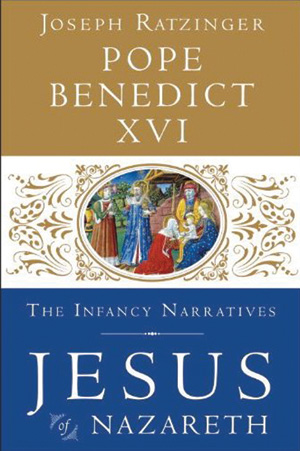
Jesus of Nazareth—The infancy narratives by Pope Benedict XVI, Ignatius Press
Love and humility: This is the modus operandi of God that the theologian Joseph Ratzinger explains to the reader of the third book dedicated to the figure of Jesus. The Childhood of Jesus is, according to the German title, a “prologue,” an “antechamber,” to the study of the Gospels. In fact, Benedict XVI explains in the last lines of the book that the episode that closes the infancy narratives, where the 12-year-old Jesus teaches in the Temple of Jerusalem, opens a door to the whole figure of Jesus, which is what the rest of the Gospels will tell. The author reads the two narratives of Matthew and Luke following patristic exegesis and classical studies, such as those by Joachim Gnilka and Gerhard Delling, but, as in the two previous books, he follows the latest studies and uses Rudolf Pesch and Klaus Berger. But among all he agrees most fully with the ideas of Jean Danielou and René Laurentin.
Love is the key word: the love of God for mankind, which he shows accepting the decision of Mary at the moment of the Annunciation. Mary, the young virgin, answers with a question whose full meaning has not ever been explained. That annunciation is so different and hidden, so little “mythological” and so real, because it is humble. Ratzinger constantly reminds us that the glory of God is manifested only in humility. And this is true love—the humility of Joseph, for example, a righteous man, faithful to the law of Israel, who chooses love when deciding how to deal with the pregnancy of Mary. The love that God offers first to the shepherds who run towards the grotto where Jesus was born: an “eudokia” that unites the will of God to love first with the will of men to accept and reciprocate his love. Benedict XVI finds modern Bible translations in German and Italian ineffective, because they do not give a good idea of that “being conformed to Christ” to which faith leads.
Love also appears in the story of the wise men, men with a thousand historical aspects, men who with wisdom purify the message of science. As successors of Abraham they set off to answer the call of God.
Humility characterizes Joseph, who listens to God in a dream because he has the ability to perceive the divine, to discern, because he lives the Law as Gospel. Joseph knows when to step aside as the Magi and the shepherds worship the Son of God, and then takes up the situation and takes the family to Egypt.
Humility characterizes the shepherds, as it does Elizabeth running towards Mary. The shepherds, too, run to Jesus, partly out of curiosity, but also for the joy of knowing that the Savior is born. And the Pope reflects: How many Christians today rush to the things of God? Yet the things that matter are those of God, suggests the Evangelist. “The things of God deserve haste, in fact; the only things in the world that deserve haste are those of God,” said the Pope in his homily on August 15, 2011.
And then the signs of the presence and glory of God, the real one, not the fake one of Caesar Augustus, even if he with his “pax” offers the perfect backdrop to the fulfillment of a promise that is not only for the people of the Old Covenant. The signs of poverty are those that indicate that God is present. The poverty of the stable of Bethlehem is a real sign, as if to say: Which God invented by man would manifest himself in this way?
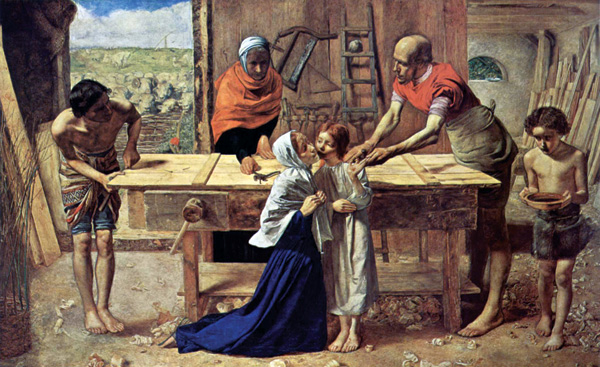
Christ in the House of His Parents (1849-50), by John Everett Millais. Oil on canvas, 34 x 55 inches
From the moment of his birth, Jesus is outside the realm of the powerful. And it is his poverty which proves that he is the truly powerful one. This “theology of poverty” Ratzinger shows us in every event, from the Annunciation to the manger, to the sign of contradiction that arises already in the Temple: the contradiction of the Cross, the interpretive key that the aged Simeon sees in the Baby Jesus, a sign that challenges us to love.
Love: this is the sign of contradiction, the challenge. God is love, the theologian repeats, but love can also be hated when it challenges us to transcend ourselves. Theology should always be imbued with humility rather than with academic pride like that of the experts of Herod, who do not see what the Magi have read in the Scriptures, that the Savior is born. Perhaps they have read it in the stars, perhaps in creation, which is God’s language. And still today, the Pope reflects, creation interpreted by Scripture speaks to humanity.
Love and humility are characteristics of mothers who today, like those of the children killed by Herod in the slaughter of the innocents, continue crying out to God with the same insistence, but at the same time the resurrection of Christ makes them strong in the hope of true consolation. From Egypt to Nazareth, from the exile of Exodus to the exile of sin, only God can call everyone back, and Jesus gives the definitive Exodus and guides the way to God.
Humility and love are the characteristics of Jesus’ parents, who do not understand what the 12-year-old boy replies to them after their three days of anxiety and distress. But the novelty and radical fidelity found in this story are its truest theological content.
Humility must also animate good exegesis, which should leave intact the high level of the word of Jesus, far above us, and not reduce his sayings by wondering how far we can take them literally.
And there are also some surprises in the text of Joseph Ratzinger, as when he writes that St. Augustine was wrong: Mary made no vow of virginity.
Joseph Ratzinger leaves for a while his beloved Father of the Church and re-reads the Annunciation.
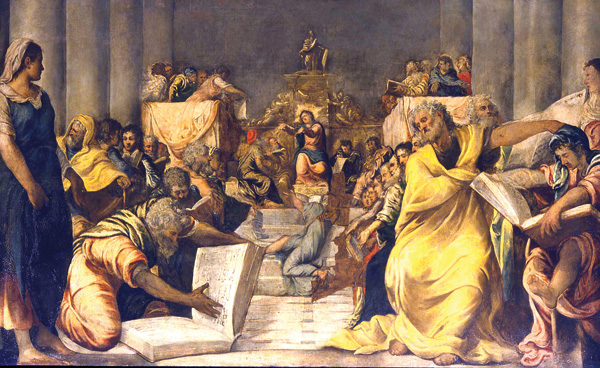
Christ Among the Doctors (c. 1542) by Tintoretto.
In his book The Infancy Narratives, Benedict XVI launches a series of readings that surprise, but they also show that the Pope has never stopped being a theologian. The most important thing to remember is that only two of the Gospels tell us anything about the birth and childhood of Jesus: the Gospel of Luke, where we can hear the voice of Mary, and the Gospel of Matthew, who tells about the vision of Joseph.
Mark, and of course John, do not speak about the first Christmas, the star, the Magi, the Annunciation, the Flight into Egypt, the anguish of Mary and Joseph in the Temple of Jerusalem. In short, the message of Jesus, his “Good News,” is that of public life, the one that begins with the Baptism in the Jordan, the baptism of John. John is the character who is absent in the infancy narratives. For now, we only know that he will be born.
We know this because the announcement of John’s birth is in parallel with the Annunciation to Mary, “a virgin” of Nazareth, the bride of Joseph. Mary, unlike Zechariah, does not challenge the angel. She has no doubt, asking only “how” because “I have no husband,” says the American edition; “I do not know man,” in the Italian and German translations. This answer seems incomprehensible, because Mary is in fact already married according to Jewish law, and, explains Ratzinger, the angel never told her “when.” So for a girl in those days it could be trivial news: you’re married, you will have a son, and he will be a “God” or “of God.”
Augustine was the first to say that Mary had made a vow of virginity, that her engagement was “fictitious” only to protect her intention from the looks of the people. And so Joseph became the old man who had only to protect the girl of Nazareth and her divine offspring. But Ratzinger doubts this: indeed, he clearly says that this theory is a far cry from the Jewish mentality of the time.
So how should this passage be understood? Ratzinger does not delve into this issue but rather explains that contemporary exegesis has not solved the problem.
“Mary, for reasons that are not accessible to us,” Benedict writes, does not think of having a child through a marital relationship.
The questions that rise to the mind also concern the Immaculate Conception, and of course the dogma of Mary’s virginity.
These are in fact dogmas, mysteries of faith, and not even a theologian Pope can fully explain them.

Annunciation (1592-96) by Federico Barocci
Mary’s response to the angel is beyond our understanding. The theologian Maria Clara Lucchetti Bingemer, who presented the book last November 20 in Rome, did not address the issue, though she said during the presentation of the book that the most beautiful page is the one dedicated to the Annunciation.
And then there are the “stray” words waiting for their fulfillment. “The virgin will conceive and give birth to a son, and shall name him Emmanuel.” This prophecy of Isaiah is one of the words which are “waiting” in the Old Testament. And their fulfillment can only be in Jesus.
From the words of Isaiah, Benedict XVI brings forth a reflection on Realpolitik and its relationship with God. This is a reflection that then leads straight to the birth of Jesus during the reign of Augustus and the pax Augusta which was always practical politics, cloaked with the chrism of the “divinity” of the emperor, and ends up helping us to understand more of the fundamental idea behind the pontificate of Benedict XVI.
It is essentially a pontificate based on faith, truth and revelation, read through “love and humility.”

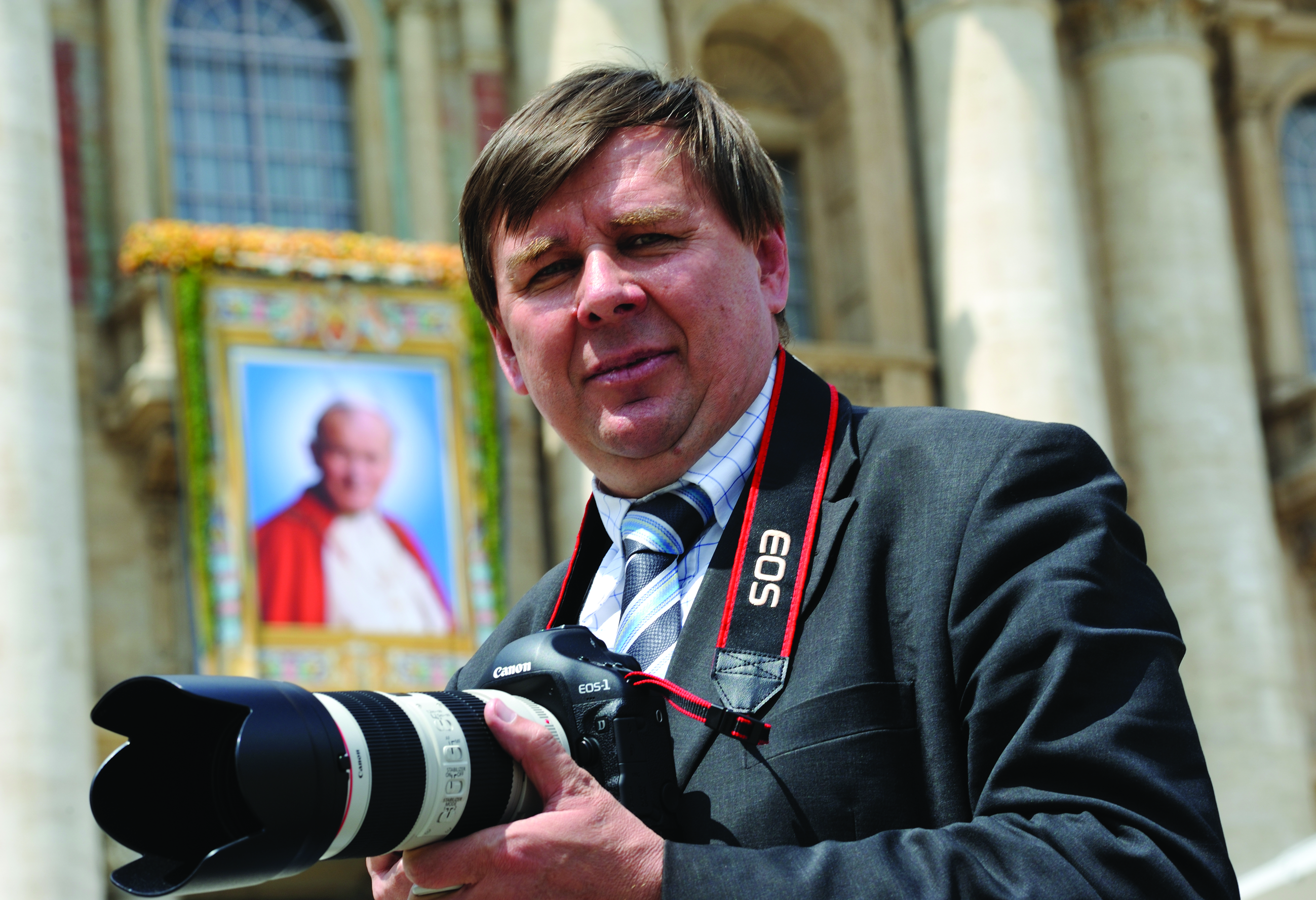
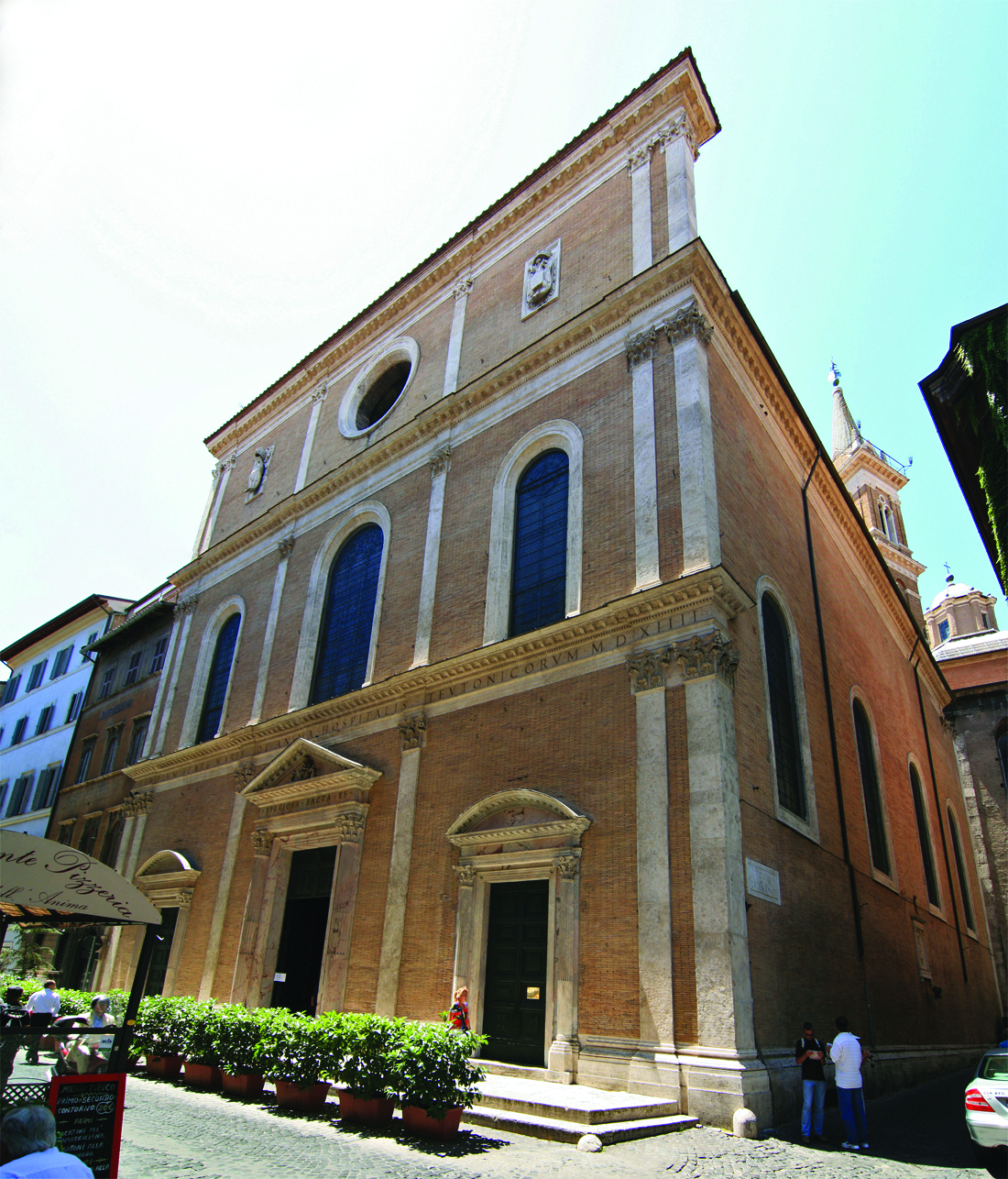
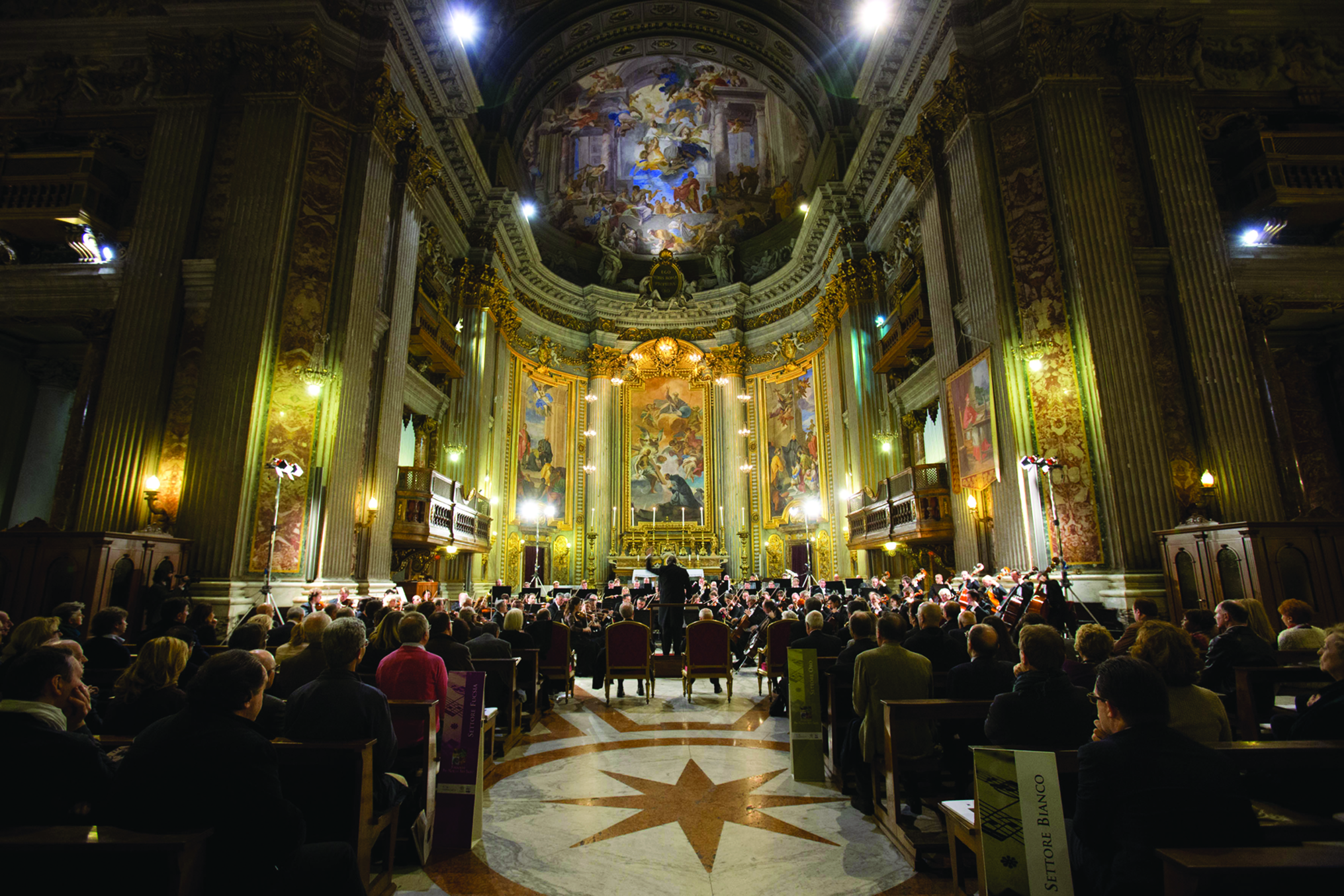
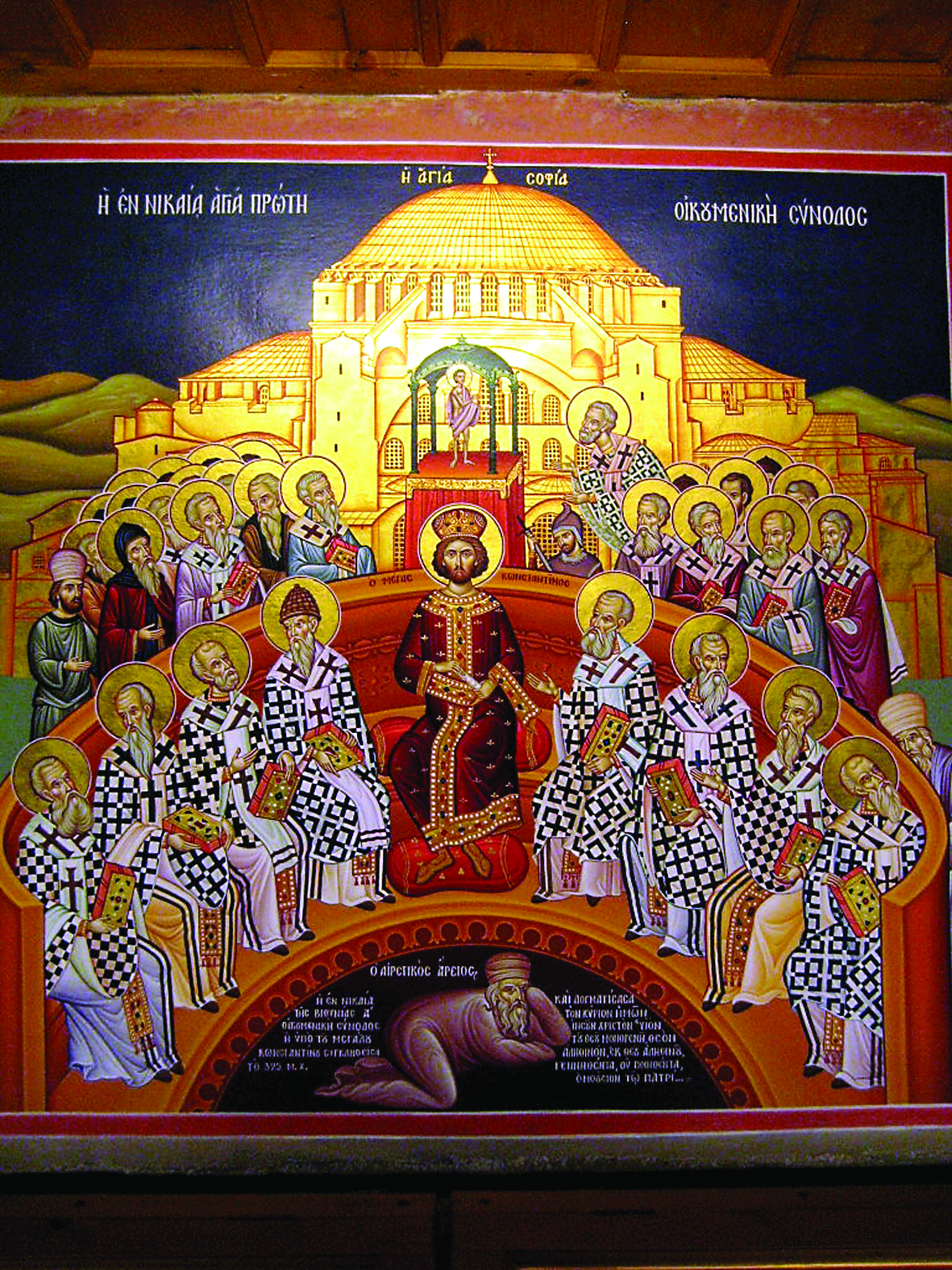
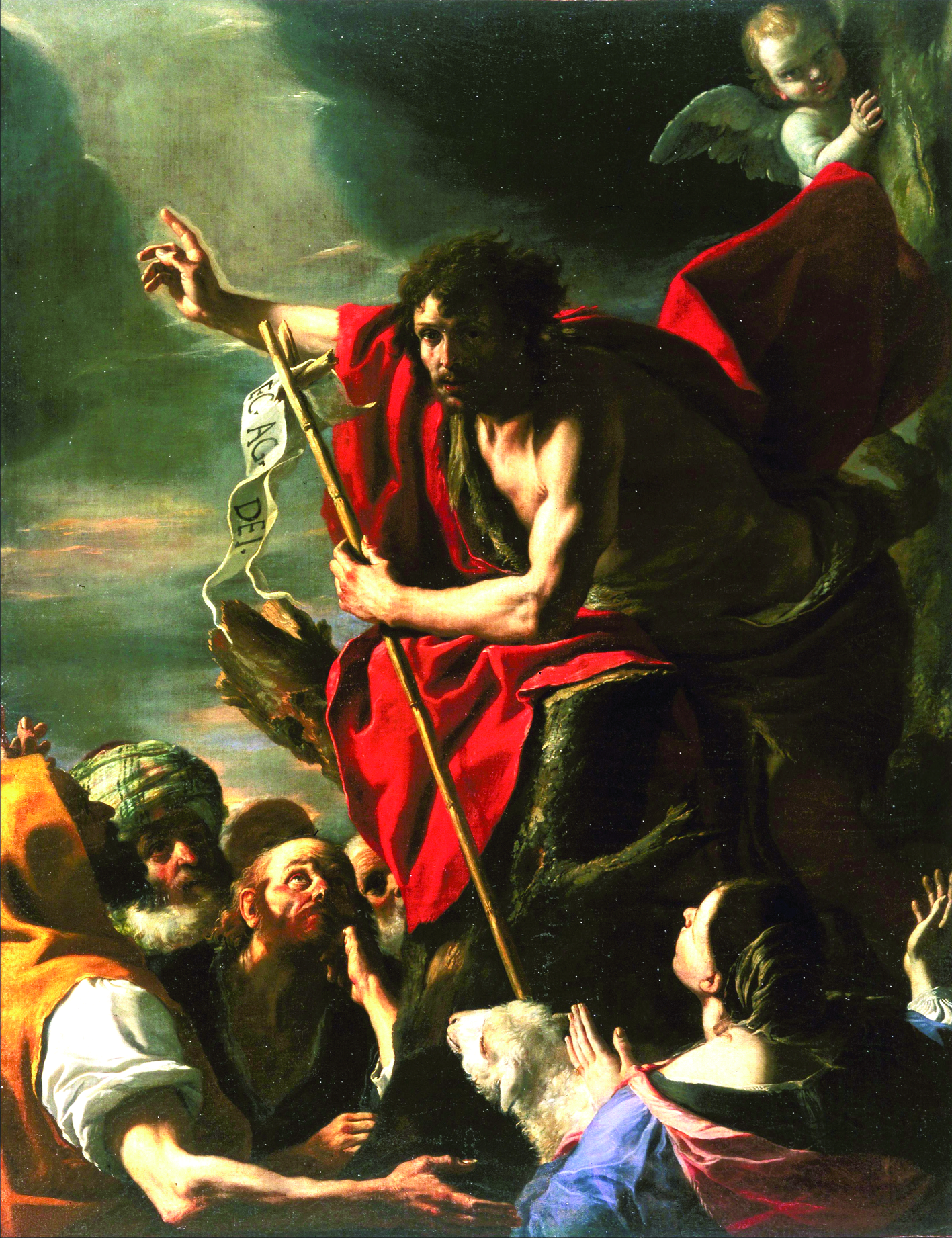
Facebook Comments